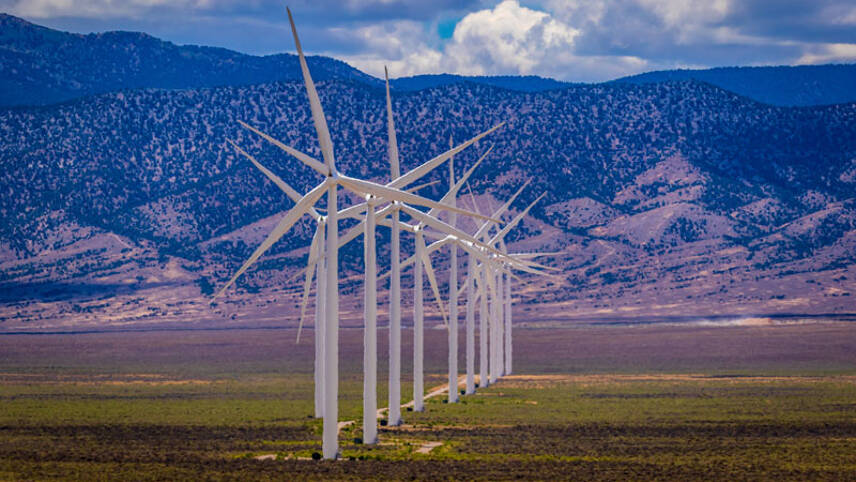Register for free and continue reading
Join our growing army of changemakers and get unlimited access to our premium content

Pictured: Spring Valley Wind Farm, Nevada
The Act was approved in the Senate a year ago this week. It includes the world’s largest climate-related spending package to date, detailing a total of $369bn for low-carbon technologies, green skills training and climate adaptation.
Before the Act passed, President Joe Biden stated an ambition for the spending to help facilitate a 40% reduction in the US’s energy-related emissions by 2030. This was before some of the spending was vetoed by rebel Democrats and Republican policymakers. Now, BloombergNEF (BNEF) has revealed that the Act is likely to result in a 40% reduction in energy-related emissions by 2035, against a 2021 baseline.
By 2050, the US’s energy-related emissions will be 55% lower than in 2021, BNEF predicts.
While this is welcome progress, it will not be enough to align the US’s energy sector with net-zero by 2050. BNEF is highlighting how closing the gap and delivering a more rapid energy transition could attract $8trn of additional investment from the private sector between 2022 and 2050.
This is on top of the $22trn already predicted to have been unlocked through the Inflation Reduction Act.
The analysis states that, in a net-zero-aligned scenario, the US’s public purse will need to provide a further $10trn of funding to low-carbon supply and to energy efficiency and storage. It could raise at least $2bn by paring back investments in unabated fossil fuels.
Technology pathways
BNEF’s modeling finds that the cheapest way for the US to reduce emissions involves scaling up investment in wind and solar power generation and transmission. Solar capacity could be evenly split between rooftop systems and large-scale projects, as the US has an abundance of land and roofs that could be used.
At present, however, the US is partly betting on some more costly options – including carbon capture and storage (CCS) for gas plants and hydrogen plants. It is also set to scale back CCS subsidies before the technology matures, BNEF is warning.
BNEF has stated that, due to the Act, gas-fired electricity generation coupled with CCS will become cost-competitive with unabated gas in 2028. But it is unlikely to be adopted at scale until some years later, just as the US scales back tax credits.
BNEF is recommending that President Biden extends the tax credit scheme to 2050 while also implementing measures to scale back gas-fired power generation and replace it with cheaper, cleaner options.
“As cleaner power becomes key to decarbonizing everything else, the US must address its love affair with gas,” said BNEF’s senior associate for US power markets Tara Narayanan.
The good news is that coal is certainly on the way out. Whatever happens, all of the US’s coal-fired electricity generation is set to come offline by the 2030s at the latest, by BNEF’s predictions.
Away from the power sector, BNEF is predicting a “more muted” decline in emissions from industry under the Act. This is because it funds the use of hydrogen in heavy industry to a greater extent than electrification, which large energy users are likely to find more costly due to higher installation and operating costs.
“Ultimately, industrial decarbonization in the US depends more on electrification and fossil fuels with CCS than on hydrogen,” notes BNEF in its net-zero-aligned scenario.
BNEF’s analysis looks at emissions from energy-related sectors only. It does not cover emissions from land use and agriculture.


Please login or Register to leave a comment.